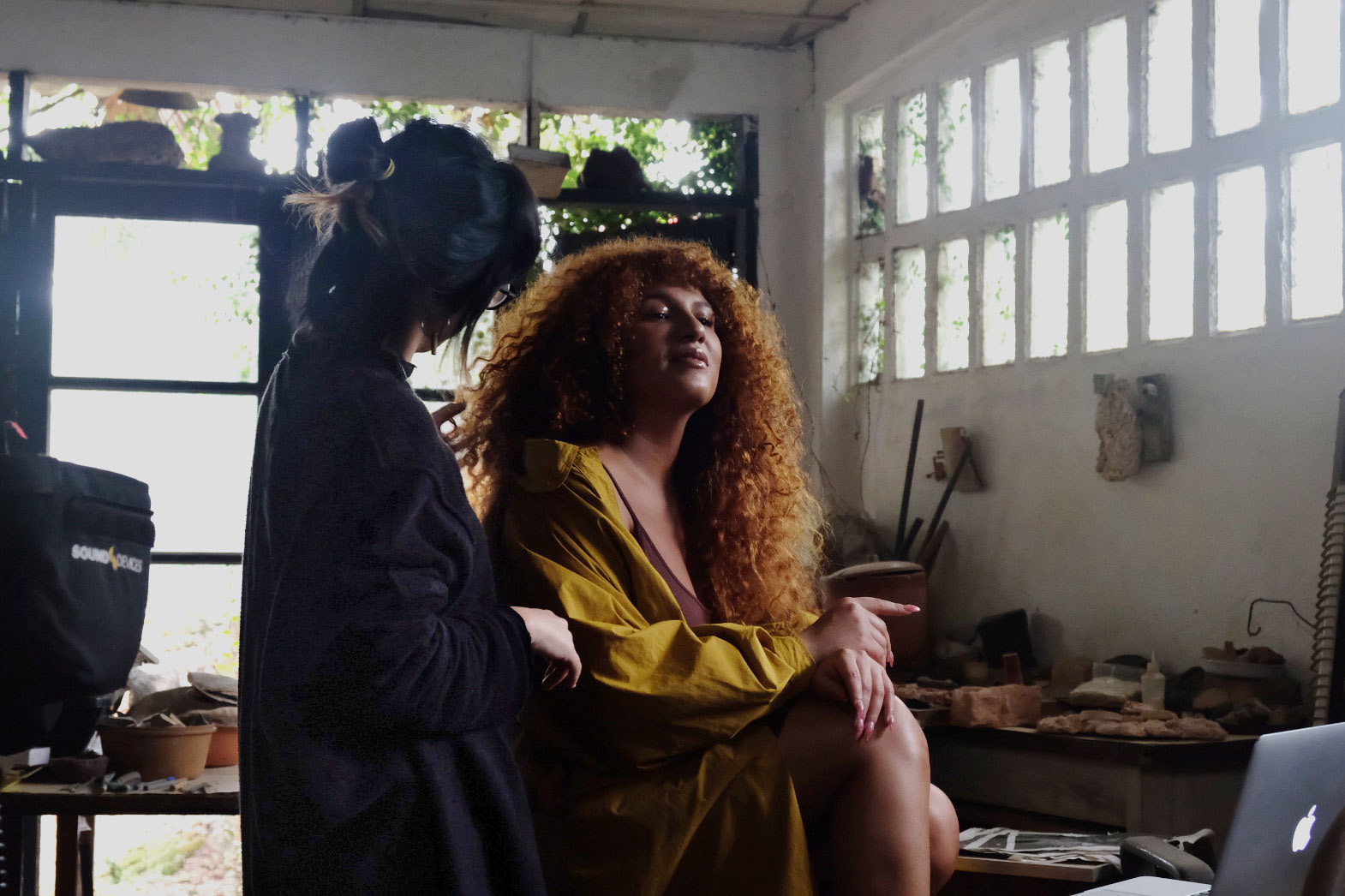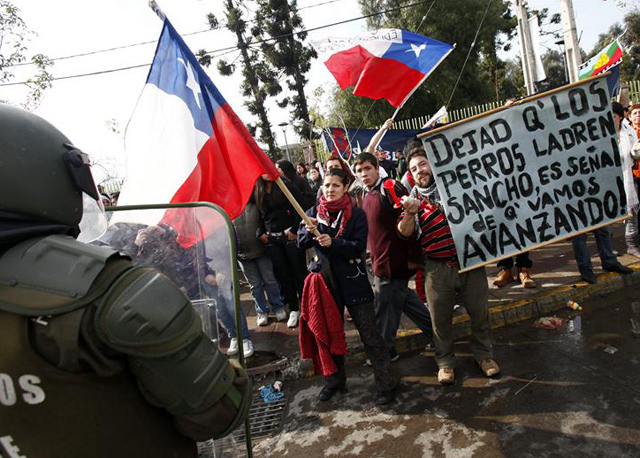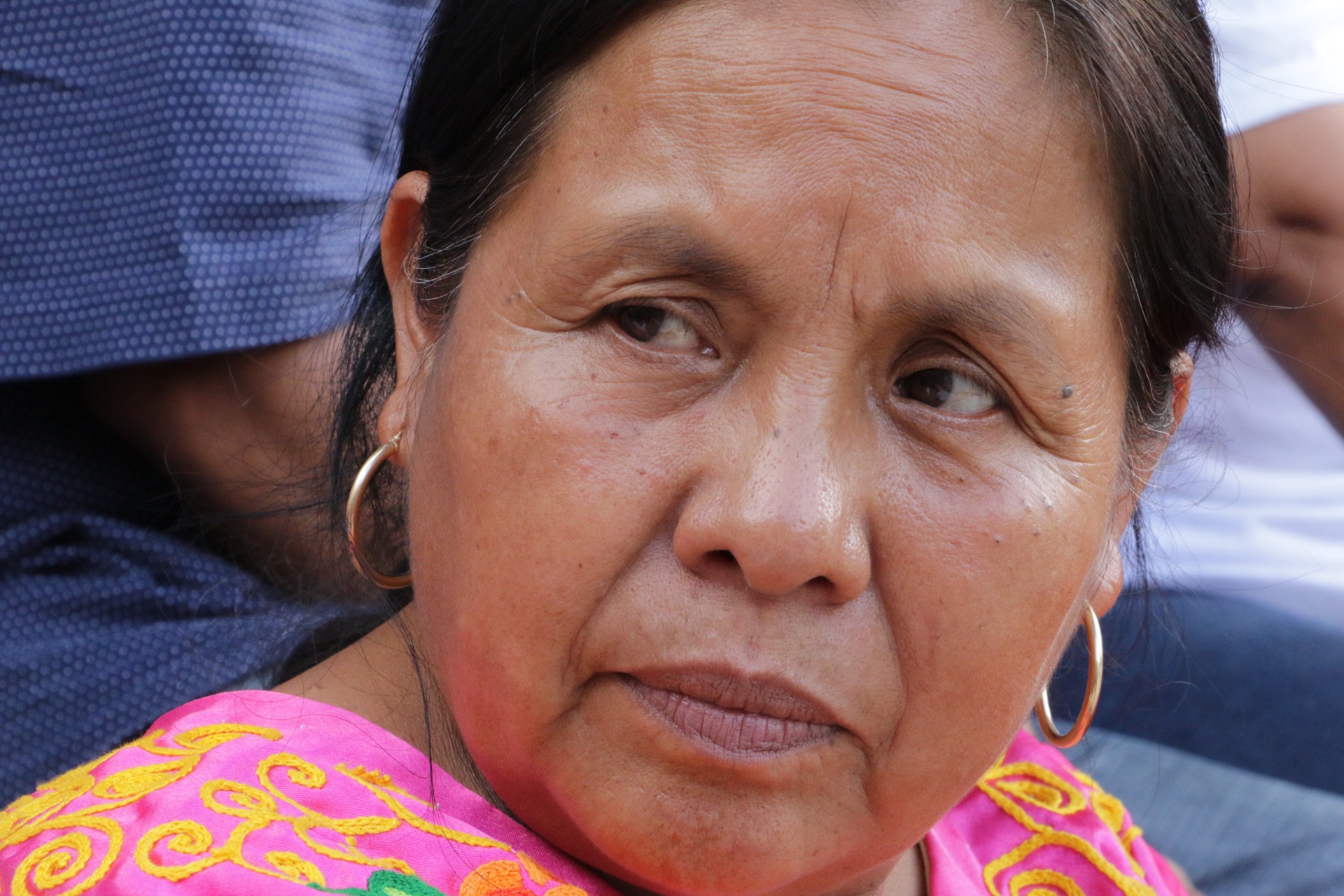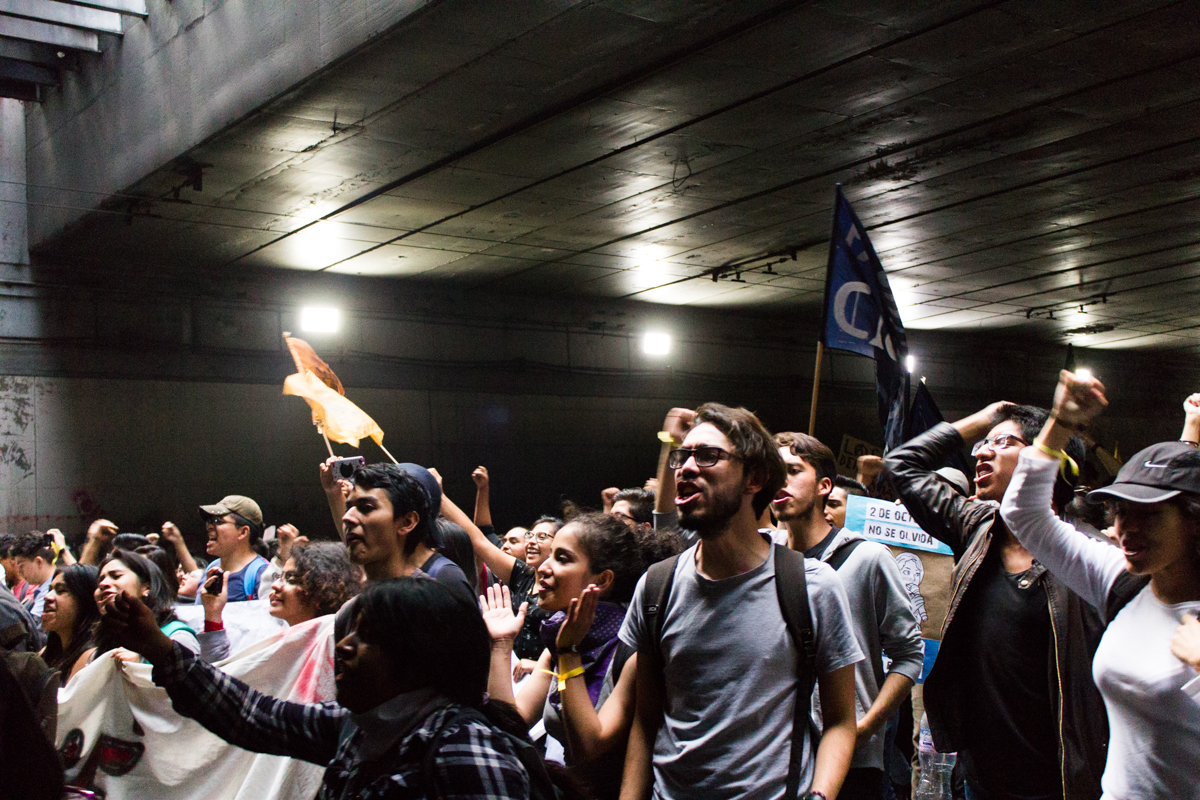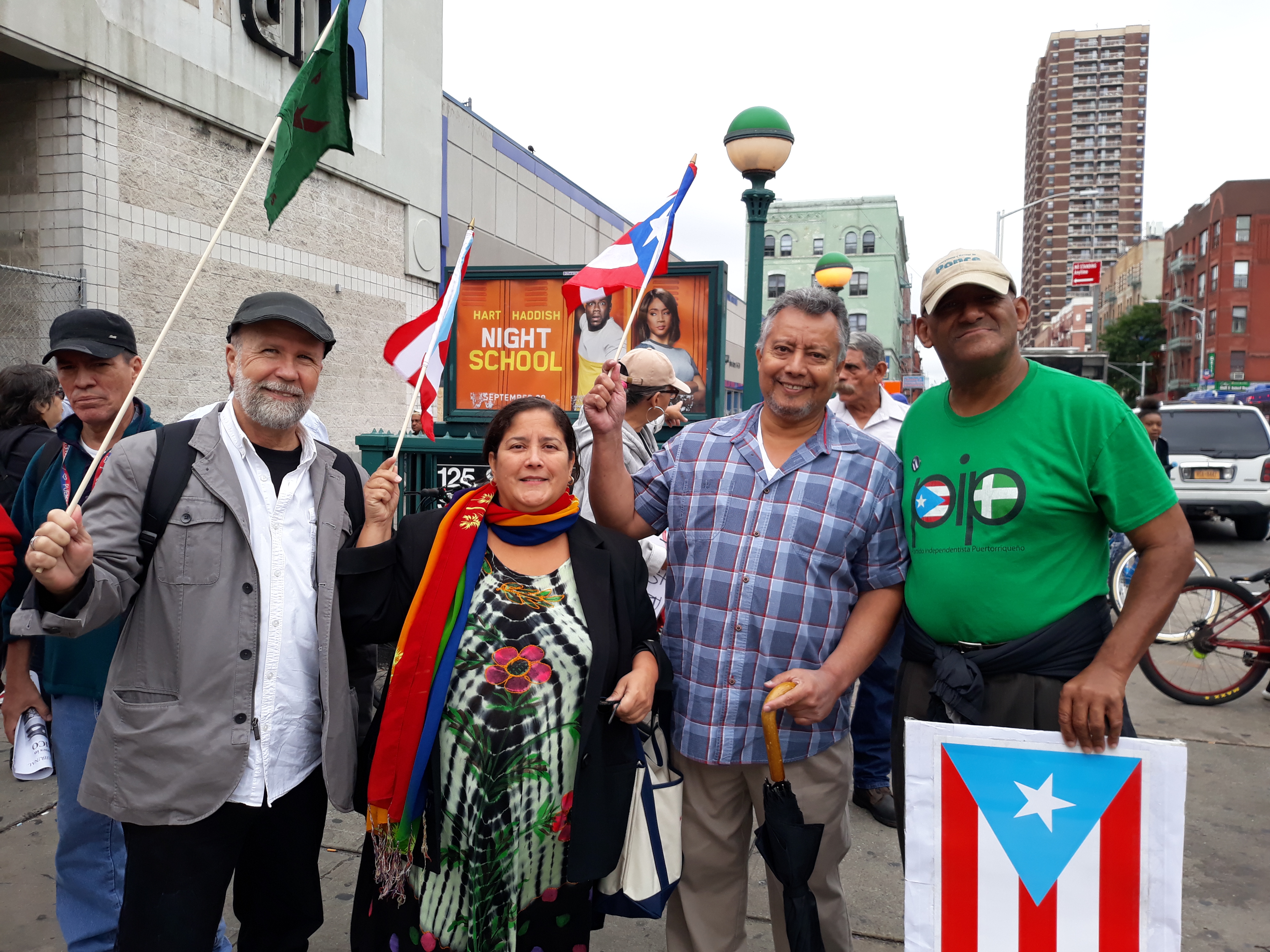
Dispatches, Features, News Briefs, North America
A year after María, 150 years after the Grito, Manhattanites march
September 28, 2018 By Alanna Elder
Late at night a century and a half ago, hundreds of rebels against Spanish rule entered the town of Lares in the western part of Puerto Rico and captured the city hall. Early the next morning, the rebels of El Grito de Lares—the Cry of Lares—declared an independent republic that encompassed the whole island. The victory was short-lived. By the following January, authorities had arrested and jailed most of the rebels and re-established control.The uprising remains the closest the island has been to independence since Christopher Columbus claimed Puerto Rico for Spain in 1493 and the United States made it a U.S. territory at the end of the Spanish-American War, thirty years after El Grito, in 1898.
In East Harlem this past weekend, a small group of pro-independence marchers gathered on 125th Street & Lexington Avenue to commemorate the anniversary of El Grito de Lares, many calling for independence for the island. Eric Ramos, a march organiser, bemoaned the current state of relations between the United States and Puerto Rico. “A relationship that is toxic like the one with the U.S. has been for the last 120 years, like the one with Spain,” he said, “doesn’t work.”
But 20 blocks south of the pro-independence march, a larger crowd, all dressed in white, walked in silence down Lexington Avenue toward Trump Tower, with a different objective. A week after President Trump made false comments about the death toll from Hurricane María, the organizers of the silent march wanted to call attention to the conditions that persist on the island: school shutdowns, disease outbreaks, electric outages, and the out-migration of thousands of people.
One of the organizers, Carmen Cruz told Spectrum News that the decision to have everyone dress in white was to show that “we come in peace, we come with faith, and we come with hope.” Demonstrators in Puerto Rico also held silent processions on Sunday.
The pro-independence marchers in East Harlem called out, Filiberto vive; la lucha sigue! (“Filiberto is alive; the fight continues!”) It was a reference to Filiberto Ojeda Ríos, the leader of the Boricua Popular Army, also called Los Macheteros. Rios was known for his unwavering commitment to Puerto Rican autonomy and for his fundraising strategy. In the 1980s, when a U.S. court sentenced him to 55 years in prison for stealing $7.1 million from a Wells Fargo depot, he escaped to the island and lived there in hiding until September 23, 2005, when FBI agents killed him in his home. The date now has particular significance for the independence movement as a symbol of the unfair treatment of activists.
On and off the island, feelings about independence are still divided. Puerto Ricans voted in 2017 in favor of statehood, but an election boycott caused a low turnout. Congress has not taken up the issue.
Mario Aguila, a Puerto Rican who lives in Brooklyn, showed up to Sunday’s independence march, despite ambivalent hopes for the island’s future. What he is clear on, he said, is that he does not agree with U.S. policies that have impact on its citizens.
“My uncle died in Vietnam, and my brother and I served,” he said. “And we don’t get to vote? I can, because I live here, but all those people who risked their lives for this country, they don’t get to vote? That’s not right.” Still, Aguila is not convinced independence is the answer: “Remember: we don’t have an army. I haven’t really sided with it,” he said, echoing many people who say that Puerto Rico lacks the money or infrastructure necessary to become its own nation right now.
Others in the crowd disagreed. College instructor Lorraine Liriano shook her head.“There is an allegation that Puerto Rico needs the U.S. That’s not true.” To Liriano, the austerity measures imposed this year to address Puerto Rico’s debt crisis amount to money extracted from everyday Puerto Ricans.
In 2016, Congress passed the Puerto Rico Oversight, Management, & Economic Stability Act, or PROMESA, to keep Puerto Rico from defaulting on billions of dollars of debt. The law created the Financial Management & Oversight Board, locally known as the Junta, which in Spanish means “board.” Critics like Liriano view the board as a colonialist institution because its is not an elected body; the U.S. president appoints its members. This past spring the board announced a new fiscal plan cutting pensions and government spending to raise money for debt payments.
Liriano said her position is not just about Trump, the Republicans or the hurricane. “PROMESA happened under Obama,” she said. “It’s the real problem in Puerto Rico. María exposed the problem.”
Another debated piece of legislation is the Jones Act, which requires products to come into Puerto Rico via U.S.-built and owned ships. The Trump administration briefly suspended the law last year to allow hurricane relief to reach the island, but did not renew the waiver when it expired. The late Senator John McCain introduced a bill to permanently exempt Puerto Rico from the Jones Act last year, but it did not advance.
For Liriano, the Jones Act has driven inequality in Puerto Rico, with or without the hurricane. “We have people paying $6 for milk while people on the Upper East Side pay $2.50,” she said. Supporters of the Jones Act argue that it is necessary to protect U.S. shipping workers and industry.
Last year at this time, Puerto Rico was still experiencing the immediate impacts of the hurricane. The entire island was without power and the official death toll was 13, according to the BBC. In the months that followed, 3,000 people would die as a result of the storm, and many would continue to live without power well into summer 2018. The recovery is not over, but Hurricane María has joined the cluster of events that each September bring Puerto Rico’s past to the surface.
About Alanna Elder
Alanna is pursuing a master’s in journalism and Latin American and Caribbean Studies and studying Quechua at NYU. She has experience in general assignment reporting for public radio in Alaska and Wyoming, and a B.S. in agroecology. Her research interests include land issues, farming, gender, and social movements in the Andes.
